Virginia is for Wildlife Photography Lovers
Article and photos (c) by Barbara J. Saffir; Feature photo from dcr.viginia.gov
No need to zip off to Zimbabwe or cruise to Costa Rica to photograph cool critters, bodacious birds, and blindingly beautiful flowers. Just go on safari at a Virginia State Park.
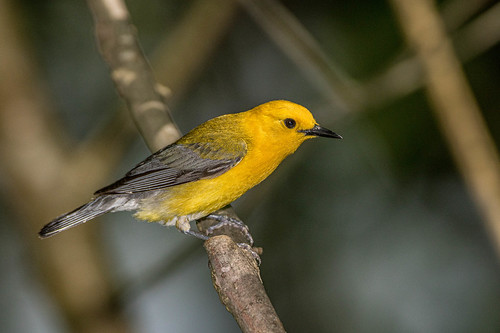
Sunflower-yellow prothonotary warblers adorn the trees and the trails at Mason Neck State Park, practically in the shadow of the nation’s capital. Acrobatic dolphins frolic along the Atlantic Ocean beaches at pristine False Cape State Park. And perhaps Virginia’s most unique fantasyland of nature and wildlife can be captured at mountainous Grayson Highlands State Park, where fuzzy black bears forage in the forests and wild ponies pose by purple rhododendrons and orange flame azaleas along the legendary Appalachian Trail.
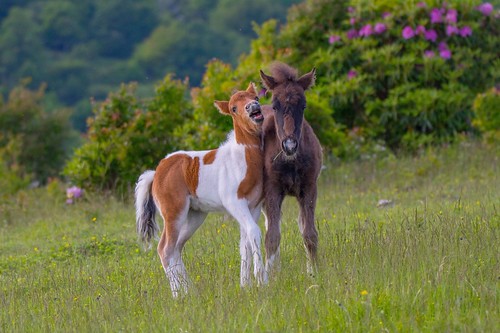
Virginia is one of the most diverse states in the entire country as far as flora and fauna go. And with 39 state parks — and counting, as more continue to open — all 8.6 million Virginians are roughly an hour away from one or more of Virginia’s award-winning parks.
Treasures await casual to advanced photographers year-round, though the critter parade and the backdrops change with the seasons. For example, winter is the best time to capture bald eagles nesting along the Potomac River at Mason Neck, Westmoreland, and Caledon state parks.
And with no leaves to block the views, it’s easier to catch mama eagle carting a carp in her razor-like talons to feed her famished eaglets. At Sky Meadows State Park in winter, no leaves mean a clear shot of a fox squirrel or a red-headed woodpecker.

In January along the muddiest of creeks, Virginia’s earliest wildflower blooms: curvy cranberry-and-yellow skunk cabbage, which harkens to a Georgia O’Keefe painting. Spring and summer literally paint a rainbow in all Virginia State Parks. Fields of bluebells glow at Shenandoah River State Park. Pink and yellow orchids burst into bloom at others.
Tawny chipmunks perch in mulberry trees and stuff their cheeks with squishy purple berries. Iridescent blue-green ebony jewelwing damselflies sun themselves on rocks and reeds. Red-orange scarlet tanagers fly home with juicy, green caterpillars dangling from their beaks to feed their babies. Violet coral fungus pops out of the musty brown muck.
Fall brings hawks with red shoulders, red tails, or red eyes by the droves to Kiptopeke State Park. And all over the Commonwealth, autumn brings orange, russet, red, and yellow leaves — and orange, russet, red, and yellow birds migrating through that tangled tapestry.
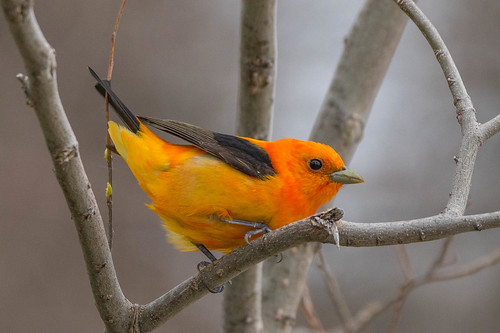
And sure, it doesn’t hurt to own an expensive DSLR camera with a long telephoto lens but a cell phone or pocket camera can capture many memories. One of my mentors started shooting with a $27 camera. Since she only photographed close-ups and never printed photos, it performed perfectly for online posts.
I still carry a point-and-shoot even when I’m lugging around a heavy camera and lens. Sometimes I use it to capture one of my favorite late-summer stars: itsy bitsy green treefrogs with sticky toes and gold eyelids at Leesylvania State Park. At Leesylvania and other state parks, gangly great blue herons sometimes venture so close that a long lens is almost worthless. And it’s especially good to snag close-ups of beauty-queen bugs like handsome meadow katydids with baby blue eyes and red, orange, green, yellow, and turquoise bodies.
At First Landing State Park, nabbing a shot of pelicans promenading above a sandy Chesapeake Bay beach at sunset does not lend itself to a pricy, “fancy-schmancy” camera. But if I’m photographing black bears when they’re gorging on blueberries in June, I prefer a 600 mm lens — and to take the photograph from inside my nice safe car!
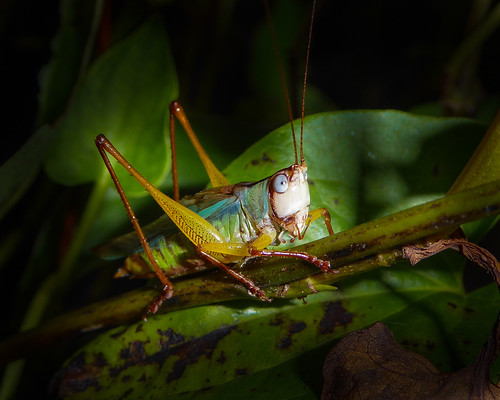
Stalking wildlife with a camera is the same as a hunter stalking prey. The most successful safaris require patience, knowledge of the critters and their habitats, silence — and luck. Even when I’m hiking, I stop every few minutes to listen for the sounds of life.
If I glimpse a bird or beast I really crave, my patience grows to equal my desire to capture the subjects and share their beauty, in part so others also fall in love with them and work to protect them. And I always try to photograph ethically as the National Audubon Society teaches: never harm a critter or disturb its ability to thrive.
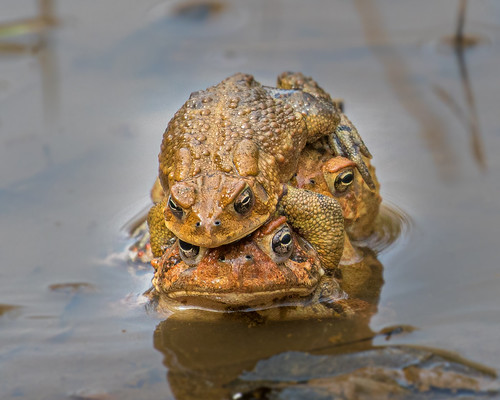
The best time to capture wildlife is typically near dawn or dusk. But I’ve grabbed some of my most memorable shots when other photographers were sitting on their sofas. Like tree swallows and other birds puffing up their feathers to cope with 95-degree heat at noon. And pint-sized southern flying squirrels — “fairy diddles” — with bulging eyes that only venture out at night. And a red fox and an otter fishing together like BFFs on a snowy riverbank on a blustery 20-degree day.
Every time of day — and every time of the year — is great for nature and wildlife photography. You never know what treasures you’ll discover.
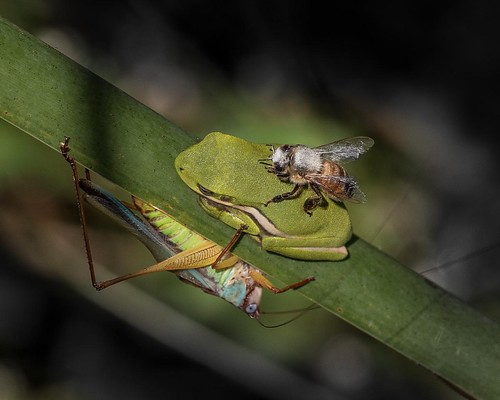
This article originally appeared in the Virginia Department of Conservation and Recreation blog and has been reprinted with permission.




